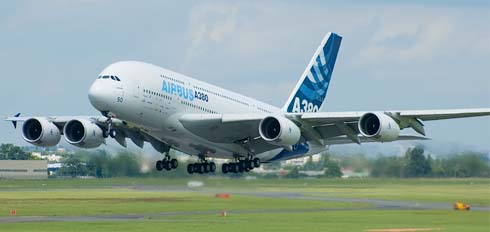

Biomass conversion
Most aviation fuels are kerosene-type jet fuels (Jet A, Jet A-1) originating from crude oil. Crude oil must be refined to be useful and jet fuel is only one of many products that can be derived from crude oil. Jet fuel is extracted from the middle distillates fraction and competes, for example, with the production of diesel. Since a few decades, there is an energy problem due to the depletion of the natural resources of coal, natural gas and crude oil.  Crude oil is a limited natural resource subject to depletion and several reports indicate that the world's crude oil production is close to the maximum level and that it will start to decrease after reaching this maximum.
Crude oil is a limited natural resource subject to depletion and several reports indicate that the world's crude oil production is close to the maximum level and that it will start to decrease after reaching this maximum.
Furthermore, it is predicted by the aviation industry that aviation traffic will keep on increasing. So, there is a need to find new sources of abundant and affordable energy. One of the planned solutions for energy production (transportation, power plant, heat production, etc.) lies in mixtures of ex-fossil fuels and ex-biomass fuels in various amounts.
If this topic is important for terrestrial transportation, it is crucial for aviation and the search for new aviation fuels is therefore very challenging. One possibility is to get syngas (a mixture of H2 and CO) from biomass resources, such as wood for instance and then to convert this syngas to fuels by using the catalytic F-T (Fischer-Tropsch) process to get F-T fuels. This conversion to syngas through thermal processes needs to be further studied. The project aims to handle this subject by the writing of detailed chemical kinetic models able to explain these conversions either by considering one compound or a mixture of compounds. These compounds can be bio-oil components (resulting from the flash pyrolysis of wood) or other natural molecules such as glucose.
Contact : Laurent Catoire, professor, head of department